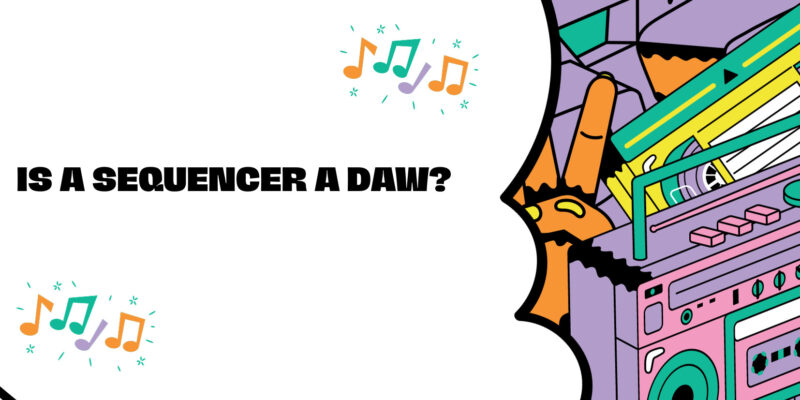In the world of music production and composition, the terms “sequencer” and “DAW” (Digital Audio Workstation) are often used interchangeably. While both are essential tools for creating music, they serve distinct purposes and offer different features. In this article, we will explore the differences between a sequencer and a DAW, shedding light on their individual roles and functionalities.
What Is a Sequencer?
A sequencer is a music production tool designed primarily for creating, arranging, and manipulating musical sequences or patterns. It is a fundamental component in electronic music production and has evolved significantly since its inception.
Key characteristics of a sequencer include:
- Pattern-Based Composition: Sequencers allow musicians to compose music by programming patterns or sequences of musical notes and events. These patterns can be looped, layered, and arranged to form complete songs.
- Real-Time Recording: Some sequencers support real-time recording, where musicians can play or input MIDI data directly, capturing their performances in a linear or looped fashion.
- Quantization: Sequencers often offer quantization options, ensuring that recorded or inputted notes align with a specified musical grid, enhancing timing precision.
- Automation: Many sequencers allow for automation of parameters such as volume, panning, and effects, enabling dynamic changes in the music.
- Hardware and Software Variants: Sequencers can be standalone hardware devices, software applications, or integrated into MIDI controllers and synthesizers.
- MIDI Control: Sequencers frequently communicate with MIDI instruments and devices, controlling and triggering external sound sources.
What Is a DAW (Digital Audio Workstation)?
A Digital Audio Workstation, or DAW, is a comprehensive software application designed for music production, audio recording, editing, mixing, and mastering. DAWs provide an all-in-one solution for musicians and audio engineers, serving as a central hub for the entire music production process.
Key characteristics of a DAW include:
- Multitrack Recording: DAWs facilitate the recording of multiple audio and MIDI tracks simultaneously, making them suitable for recording live performances, vocals, instruments, and more.
- Audio Editing: DAWs offer advanced audio editing tools for tasks like trimming, time-stretching, pitch correction, and audio manipulation.
- Virtual Instruments: Most DAWs include virtual instruments such as synthesizers, samplers, and drum machines, allowing users to create music entirely within the software.
- Mixing and Effects: DAWs provide a mixing environment with features like EQ, compression, reverb, and delay effects, enabling users to create polished and professional-sounding tracks.
- External Plugin Support: DAWs support third-party plugins, expanding their capabilities with a wide range of virtual instruments and effects.
- Complete Song Arrangement: DAWs enable users to arrange and edit full songs by combining recorded tracks, MIDI sequences, and virtual instruments.
Key Differences: Sequencer vs. DAW
- Scope of Functionality:
- A sequencer is primarily focused on creating and manipulating musical sequences and patterns.
- A DAW provides a comprehensive suite of tools for recording, editing, arranging, mixing, and mastering audio and MIDI.
- Audio Recording and Editing:
- Sequencers may offer basic audio recording and editing capabilities but are often more MIDI-centric.
- DAWs excel in audio recording and provide advanced audio editing and processing tools.
- Virtual Instruments and Effects:
- DAWs come with a wide array of virtual instruments and effects.
- Sequencers may have limited or no built-in virtual instruments and effects.
- Multitrack Recording:
- DAWs are designed for multitrack audio and MIDI recording.
- Sequencers may support multitrack MIDI but are generally less focused on multitrack audio recording.
- Mixing and Mastering:
- DAWs are the go-to choice for mixing and mastering audio.
- Sequencers may offer basic mixing capabilities but lack the comprehensive features of DAWs.
Conclusion:
In summary, a sequencer and a DAW are distinct tools in the music production landscape. While a sequencer is ideal for creating musical sequences and patterns, a DAW is a comprehensive software environment for audio recording, editing, virtual instrument integration, mixing, and mastering. The choice between a sequencer and a DAW depends on your specific musical goals and workflow, and many music producers and composers use both in conjunction to achieve the best of both worlds.

